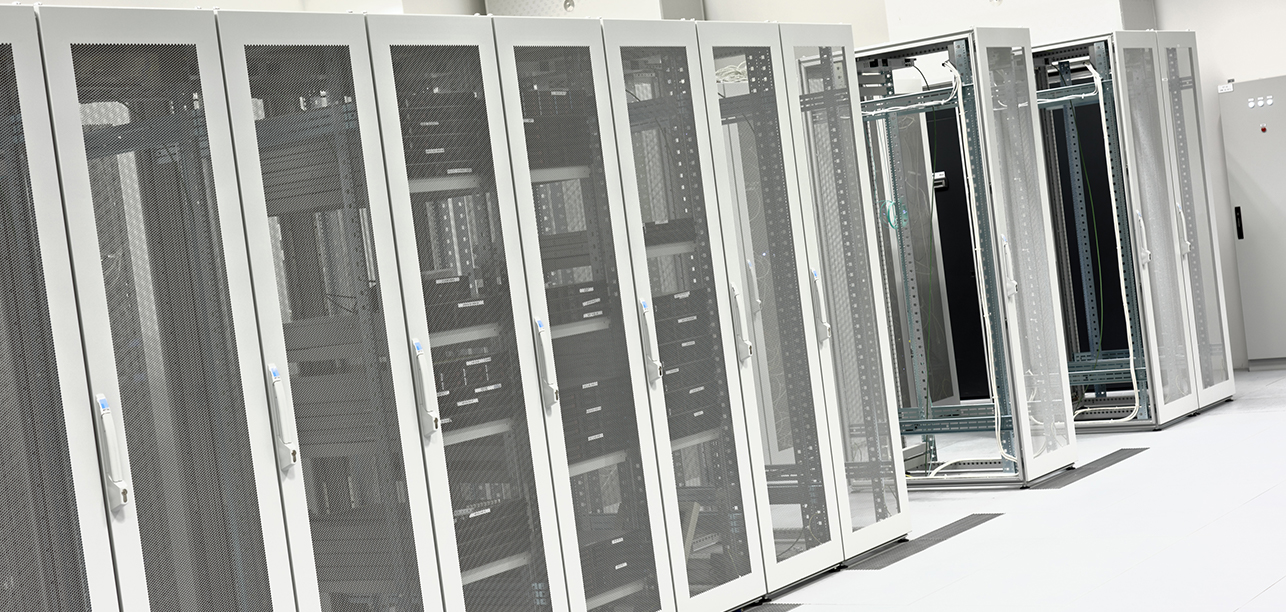Month: July 2015

I’m a system administrator (sys admin) for INAP.
This is a really tough topic to be concise about because any particular day in the life of a Server Intellect sys admin is pretty different than any other day. I mean, the differences are so vast, I don’t know how anyone who’s truly interested in the meat of the tech could ever get bored.
When my friends and family ask what I do, I like to tell them to think of me like an Internet Handyman. Our clients reach out and say “Hey, my such and such is broken, do you guys handle that?” and at Server Intellect, the answer is pretty much always “absolutely we do”.
Starting The Shift
I work during the first shift of the day, which is generally the busiest since folks from all over the world wake up and get to work right before we arrive. We are never NOT staffed with admins to respond to an issue, so my other first-shifters come in and take the baton from our overnight team, who gives us a quick rundown on what requests or tasks from our European and Indian clients are still lingering or need more time or attention from the night before.
The clients overseas are doing business and can run into any old thing that may need addressing. I am usually making coffee while absorbing the details of the rundown. Its not long after this conversation that our US and Canadian clients will send in the initial wave of reports that need attention that morning.
Working The Queue
This is where the “every day is different” part of my job starts. We keep a queue of support requests (called tickets) that customers submit, and there’s a 40-inch screen at the north wall of the room that tells us all how many tickets need attention, how many new server orders need for someone to jump in and preconfigure a best-practice environment before handing over the passwords to the client, and how many clients are currently in migration.
Our overnight guys are great, so generally we come into only about three-to-five unresolved tickets on the board, but they start to climb as the day ticks on.
What kind of stuff comes in on a ticket? Every client is as different as every workday. They may have noticed that their contact form is not working as expected on their website, or that they’re seeing a ton of their email bounce back suddenly. After some time in the job, you start to get a feel for what the usual suspects might be for any particular issue. But honestly, anything’s game.
The text on your webpage is all scooted over to the left and none of the images are loading? That’s a new one, but I’ll dig around and give you something tangible to take back to your developer for tweaks even if it takes me a few hours to really uncover something useful.
Prepared for Anything
I’ve got a bundle of tools that I’ve collected over the years to help me watch filesystem and network activity that happen too instantaneously for the system to reasonably keep in a log file, so I’m no stranger to watching what your web application is TRYING to do even if it fails for some reason, and it generally gets me pretty quick answers. And often enough, it’s not even simple development tweaks or email reputation report that need to be shared with a client, but stuff that’s even more nefarious.
Once, one of our clients terminated a member of their staff, and the bitter ex-employee leaked the client’s live database password online and they woke up to a very different site than they were used to hosting. Instead of custom baby furniture, they had a site that was turned into a huge billboard for counterfeit sneakers. We keep a daily backup of each customer’s entire server instance, so it’s not uncommon for me to roll things back a few hours or even a whole day if something crazy like that happens. Once in a blue moon a manufacturer will ship us bad RAM sticks, and basically every file the system touches gets corrupted. Days like that make me bow to the backup gods and sing in languages that didn’t exist before then.
The INAP Culture
We have a steady stream of admins either starting or ending their workday every few hours. I get a few glasses of water and a stretch in before I give my brain a break for lunch. A couple of the other admins and I love to play Magic the Gathering, so we may sling some spells at each other for an hour or so before jumping back into the pile.
Things really never stop for us though, and it’s really cool to watch. You may start the day and pick up halfway through a data copy operation somebody asked for the night before, and at the end of the day, the customer’s decided they want bigger hard drives again. You spend the day coordinating a time to install with the client and arranging for the downtime and upgrade at the data center. By the end of your time in the office for that day, you’re handing the ticket to the evening guys with a brand new data transfer in progress for the same customer, and it’s all getting 24/7 attention like clockwork.
It’s not all crazy fireballs to dodge though. We have a good time doing what we do. One of our admins brings in his grill and does cookouts every few weeks. We have an arcade machine that we’re working on restoring whenever we get some free time, and there is a dark room with couches for passing out when you just need that extra hour of sleep that day. All in all, I love my career, and I have no idea what I’ll be doing tomorrow. That’s pretty exciting if you ask me.
Check out more of our Day in the Life posts with: A Day in the Life: Technical Account Managers (TAM) for Data Center and Cloud Solutions
Explore HorizonIQ
Bare Metal
LEARN MORE
Stay Connected

Do you have questions about data center cooling? Our experts are here to help.
Watch these episodes from our #AsktheExpert video series to learn about the importance of data center cooling systems.
Subfloor air flow and cable management
CRAC units and CRAH units
Cooling high-density racks
Do you have questions for our experts about colocation, cloud or IP services? Tweet us your questions!
Explore HorizonIQ
Bare Metal
LEARN MORE
Stay Connected

Customer spotlight: CrowdStar reduces costs and improves performance
As a mobile entertainment company, CrowdStar designs games specifically for women. The company’s flagship game, Covet Fashion, was released two years ago and continues to gain popularity.
CrowdStar began as one of several companies that initially launched social games on Facebook. But around 2010, CrowdStar shifted their strategy entirely to mobile gaming. The company’s decision to focus on games for women was based on the success of earlier games within this demographic. While women didn’t historically purchase console gaming systems, mobile capabilities have allowed the surge of social gaming for women. As a result, CrowdStar has filled a void in an underserved yet growing mobile entertainment market.
A hybrid approach
As Covet Fashion revenue and the number of installs began to rise, CrowdStar needed to ensure an optimal experience for their growing user base. The company sought a high-performance, low-latency infrastructure that could improve performance and scalability to accommodate traffic surges and facilitate easy rollout of game upgrades.
According to Jose “Tachu” Avila, CrowdStar’s vice president of engineering, the company’s architecture demanded a hybrid cloud approach using bare-metal and virtual cloud infrastructure. CrowdStar uses OpenStack virtual cloud, bare-metal cloud and Performance IPTM service from Internap to create their hybrid environment.
Performance-driven results
After moving its real-time rendering engine to Internap, CrowdStar saw a reduction of 60-70 milliseconds on average per render. With hundreds of renders taking place per minute, this represented a significant cost savings and also provided a better user experience.
The ability to spin up bare-metal servers on demand was a game changer for CrowdStar. When traffic spikes happen, the company can’t afford to wait days or weeks to scale its infrastructure and accommodate changing workload requirements. CrowdStar wasn’t able to achieve this degree of scalability with its previous provider.
Overall, CrowdStar expects to achieve cost savings of 30-40% as a result of performance improvements from a hybridized infrastructure that includes dedicated processing power, higher disk I/O and low latency.
Virtual and bare-metal cloud
User requests and game logic run on OpenStack virtualized instances, while storage of user data including purchase history and other persistent storage runs on bare metal. This approach avoids storing user data on shared infrastructure, where it could be mixed with dynamic game data.
Virtual cloud – CrowdStar can scale up based on demand without affecting game performance or uptime by spinning up new virtual instances to handle traffic spikes. The ability to deprovision these instances after the influx subsides provides a cost-effective way to scale without overprovisioning resources.
Bare metal – The large amount of memory and CPU power required by CrowdStar databases isn’t typically available on virtual instances. “Going native” with bare metal removes the hypervisor from the equation, which makes the entire server instance dedicated to the workload at hand.
The ability to combine OpenStack virtual cloud, bare-metal infrastructure and IP services allows CrowdStar to achieve better performance and reduce costs.
Explore HorizonIQ
Bare Metal
LEARN MORE
Stay Connected

As data center power usage continues to increase, designing data centers for efficient power usage is critical. High power density data centers are engineered to provide access to additional power when needed and also offer a lower total cost of ownership. But designing data centers to pack more power and cooling into a smaller footprint requires careful planning and collaboration with a local power grid to support high-density power needs.
Designing for high power density
Different geographic regions have different approaches to power consumption. Generally speaking, most utilities aren’t very concerned about how much power you are using, because they want to sell you power. However, the rising demand for data center power in certain areas has resulted in programs to conserve power.
For example, Power Gas & Electric (PG&E) of California has developed programs specifically designed to help data center operators use power more efficiently. Typically, utilities will request a power demand letter that summarizes your power requirements for the next five years so that they can help you plan ahead for the correct equipment and costs.
When it comes to high-density data centers, understanding how power density will affect your utility requirements is critical and requires careful planning. Working together with an experienced data center engineer and your local utility is highly recommended when planning for efficient power usage in the future.
At Internap, we include sustainability consultants as part of our data center design team. This allows us to create a plan that ensures optimal facility performance while incorporating sustainable, green design practices where possible.
Explore HorizonIQ
Bare Metal
LEARN MORE
Stay Connected

The annual O’Reilly Open Source Convention (OSCON), brings developers and innovators together with investors and businesspeople to shape the future of open source. July 21 is Open Cloud Day at OSCON 2015, featuring innovations and expertise on public and private clouds, IaaS and PaaS platforms.
Internap’s Bruno Morel will discuss the benefits and challenges of a hybridized, OpenStack-based bare metal and virtual cloud infrastructure.
Delivering hybrid bare-metal and virtual infrastructure using Ironic and OpenStack
Tuesday, 07/21/2015, 11:30am–12:00pm
Presenter: Bruno Morel, Internap
Learn more
Description:
Provisioning servers has long been service providers’ bread and butter, but in recent years customer demand for higher-performing bare metal instances has increased dramatically, along with their interest in integrating bare metal infrastructure with virtualized public clouds. This shift in the types of infrastructure that customers are demanding is motivating service providers to create more efficient ways of both provisioning bare metal infrastructure, and integrating it into their customers’ overall infrastructure mix. OpenStack has recently emerged as a key platform in making both of these developments possible.
Focusing on the creation of a hybridized, OpenStack-based bare metal and virtual cloud infrastructure, this technical talk will look at the challenges encountered, as well as the solutions developed to successfully deliver bare metal instances with Ironic and hybrid bare metal and virtual infrastructure. Specific topics that will be covered include:
- Networking model and automation
- Deployment of cells
- Integration with third party software
- Security
OSCON 2015 takes place July 20-24 in Portland, Oregon. Register here.
Explore HorizonIQ
Bare Metal
LEARN MORE
Stay Connected

The popularity of esports shows no signs of slowing down. The staying power of this fledgling industry is evidenced by an influx of investors, including venture capital firms and household names like Mark Cuban. Earnings for esports tournaments are now higher than some global professional sports.
Below is a collection of articles that covers everything from an “esports 101” lesson to the upcoming SMITE World Championship hosted by Hi-Rez Studios.
Esports: The world’s biggest spectacle you’ve never heard of
Never heard of esports? ESPN viewership for the 2014 League of Legends championship exceeded 27 million people. That’s more than game seven of last year’s baseball World Series (23.5 million viewers) and the deciding game of 2014’s NBA Finals (18 million). As prize money for video game tournaments continues to grow, professional gaming is becoming a viable way to make a living. Read the article here.
Esports: The Future of entertainment
Before you laugh at the notion that millions of people are sitting around watching others play video games, let’s take a look at the numbers. Esports earnings outrank the Super Bowl, Wimbledon and the UEFA Cup. In the near future, investment in this industry will increase from tens of millions to billions of dollars simply because of viewership. Twitch.tv, an online service that hosts live video broadcasts of people playing video games, was acquired by Amazon for $970 million. With over 12 billion minutes watched per month last year, Twitch has already eclipsed Fox Sports, NFL Network and even Amazon’s Instant Video Service. Read the article here.
Smite’s new plan to take its players pro
As Atlanta-based Hi-Rez Studios prepares for the 2016 SMITE World Championship, the popular gaming company has capped prize money at $1 million. Distributing the prize pool over several major events will create a more stable professional scene for the popular MOBA game, according to Todd Harris, COO of Hi-Rez Studios. This approach will also help new teams emerge onto the scene and give more gamers – not just top performers – the opportunity to earn a decent living doing what they love. Read article here.
Hi-Rez announces Smite Xbox One invitational alongside SWC 2016
The Smite World Championships 2016 marks the arrival of MOBA eSports on console. The event will include a PC and Xbox One tournament when it returns to Atlanta’s Cobb Performing Arts Centre on January 7-10, 2016. The championships, now renamed Smite World Championship Presented By Xbox One, will test players of the original PC title and the Xbox One version, which is currently in open beta. The Smite Xbox One Invitational will bring together four top teams from the game’s emerging Xbox One competitive scene, competing for a total prize pool of $150,000. Read the article here.
Explore HorizonIQ
Bare Metal
LEARN MORE
Stay Connected

Today, Internap announced the availability of OpenStack Glance and Heat in AgileCLOUD. This new image management functionality is available in Internap’s U.S.
Let’s take a look at what that means for Internap customers, both current and future.
OpenStack, as you may know, is a set of open-source cloud software components that allows companies to build public and private clouds to provide more elastic compute, storage and network resources. Many cloud-native applications – those designed from the ground up to operate using cloud transaction principles – leverage independent toolsets to achieve a higher degree of automation and elasticity. On the other hand, traditional enterprise IT organizations are trying to leverage cloud services to allow increasingly smaller operations teams to achieve greater productivity by adopting the new toolsets used by cloud-native applications.
Both of these groups are trying to achieve the same goals: increase flexibility and reduce operational cost associated with laborious system administration tasks. With the release of Glance and Heat functionality into AgileCLOUD, Internap customers can begin realizing these goals immediately.
How Glance works
Glance is an image management service for OpenStack. Customers who need customized software images can start with an Internap-provided base image, modify it by installing common software and then save a copy of that image for deploying to new servers. For example, using the OpenStack command-line tools with AgileCLOUD, I can customize a base CentOS 6.x and create a web server image by doing something like this:
Local-computer$ nova boot [parameters] web-image.example.com
Local-computer$ ssh –i mykey.pem web-image.example.com
# yum update –y
# yum install –y httpd
# chkconfig httpd on && service httpd start
# curl –o /etc/rc.local https://deploy-scripts.example.com/web-server
# exit
Local-computer$ nova image-create [server ID] default-web-server
Local-computer$ nova image-list
In this hypothetical example, we create a new server instance and connect to it using SSH. Once connected, we update the operating system and install the Apache web server, then copy a custom boot script to save to disk before disconnecting. The last two commands save the modified server as a custom image called “web-image” and then display the complete list of available images (which include the base images and the newly saved image).
While the nova command is being used in the fictional example above, Glance is doing a lot of the work underneath the hood.
A more visible, and real working example is using Glance to import a Fedora 22 OS image directly from the Fedora cloud image downloads page:
Local-computer$ glance image-create --name Fedora22 \
--container-format bare \
--disk-format qcow2 \
--location https://download.fedoraproject.org/pub/fedora/linux/releases/22/Cloud/x86_64/Images/Fedora-Cloud-Base-22-20150521.x86_64.qcow2
One can also build custom images using other open-source operating systems such as a BSD-based system, OpenSolaris forks, older Linux versions not supported by Internap or Linux systems with OpenVZ kernels pre-installed.
Heat is even easier
A system architect could design an application’s infrastructure and deploy a proof-of-concept into AgileCLOUD using a basic structure with a tier of small web servers to accept HTTP traffic, one or two larger database servers with block storage and pre-defined security groups that only permit access from the web servers, and some in-memory caches to help reduce load on the database servers. Once the architect is satisfied with the baseline performance, she can record this information in a set of template files.
The template contains all the resource definitions, including the web servers, caches, database servers, security groups (firewall rules) for each server role and custom post-install scripts to install configuration management agents for Chef or Puppet deployments. Once this template is ready, the architect simply executes a command like this to launch the stack:
Local-computer$ heat stack-create -f template.txt [additional parameters]
Additionally, the architect in our example can define autoscaling groups within the template. These groups allow her to set minimum and maximum resources to deploy based on certain thresholds, and the heat engine will poll the Ceilometer service to determine when additional resources need to be deployed. Setting minimum/maximum values provides additional resources on-demand but set limits to reduce the financial impact of unrestrained system scaling.
Glance and Heat services are valuable tools for both cloud-native application developers already automating their cloud infrastructure as well as the enterprise IT organization looking to improve operational efficiencies.
Explore HorizonIQ
Bare Metal
LEARN MORE
Stay Connected

Your online apps are designed for speed, but the Internet isn’t.
Today’s high-performance applications require speed to provide the best experience for end users. From online shopping to gaming, the consequences of increased latency can be devastating: two seconds of website delay can result in 4% fewer customer conversions, which means less revenue for your business. In the online gaming industry, 50 additional milliseconds of latency can double the rate of game abandonment.
High-impact disruptions
A multi-homed environment that routes traffic through multiple ISPs can reduce latency, but it doesn’t guarantee that your IP traffic is traveling on the most efficient route. Additionally, setting up and maintaining your own route optimization requires you to deal directly with multiple third-party carriers, which isn’t always cost efficient. Managing multiple vendors and contracts can be an administrative nightmare.
But latency issues aren’t the only villains that could hijack your Internet performance. Trouble spots in specific geographic locations can lead to global slowdowns and service disruptions. Last month, the Level 3 network experienced widespread problems as the result of increased BGP packet loss in Asia. In the San Francisco bay area, fiber optic cables have been cut 11 times in the past year, and whether accidental or intentional, this has caused significant problems.
Avoidance tactics
While you can’t prevent these mishaps, you can avoid them. Internap’s Managed Internet Route Optimizer™ (MIRO) technology evaluates latency, packet loss and route stability in real time to select the best route to your destination. With analytics that constantly adapt to changing network conditions, you can reach end users faster, more efficiently and with greater redundancy.
Check your IP performance
How do you know if your web traffic is using the most efficient route? The IP Performance Monitor shows you the paths your carriers take to your IP address or website. If you’re already using multiple carriers, use it to compare how each one is performing. The IP Performance Monitor gives you a behind-the-scenes look into how MIRO works and how to avoid trouble spots before they impact your online traffic.
=
Explore HorizonIQ
Bare Metal
LEARN MORE
Stay Connected

Do you have questions about colocation, IP services or cloud? Internap experts are here to help.
Whether you’re new to the world of Internet infrastructure or a seasoned technology veteran, we’ll answer your burning questions in our #AskTheExpert video series. Check out some of our recent episodes!
Hot vs. cold aisle containment
Scalable power density
Tier 3 data center design
Do you have questions about cloud, colocation and IP services? Tweet us your questions!


